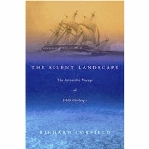The Silent Landscape: The Scientific Voyage of HMS Challenger

R Corfield
Published by: John Murray
Publication date: 2004
ISBN: 0719565308
List price: £16.00
285 pp
www.johnmurray.co.uk
Between 1872 and 1876, HMS Challenger circumnavigated the globe carrying out an extensive programme of sampling the seafloor, marine biota and the water column. The expedition lasted 3 years 5 months and traversed 68,900 miles. The data collected remained a major source of information on the oceans until the 1960s. Corfield’s account of the expedition is based largely on the diaries of three scientists and one crewman from the expedition. The hardships of the expedition are well illustrated by the fact that a quarter of the ship’s crew deserted.
The expedition carried just six scientists. The chief scientist was Charles Wyville Thomson, Professor of Natural History at Edinburgh University, whose main contribution was to disprove the azoic theory of the oceans, which argued that the oceans were lifeless below 300 fathoms. Henry Mosley, the expedition zoologist, made his reputation working on corals and the 'missing links'. Rudolf von Willemoes Suhm was a brilliant young zoologist from Bonn who died during the expedition. John Buchanan was the expedition chemist who determined the composition of manganese nodules and red clay, and John Wild was the expedition artist who became famed for his illustrations of the Challenger volumes.
However, the outstanding scientist was John Murray who was the lead author of the 50 volume scientific reports of the expedition. During the expedition he discovered large amounts of phosphates on Christmas Island, which he subsequently exploited, making him a very wealthy man. He is best known for his work on deep-sea manganese nodules with A F Renard. The captain of the Challenger was George Nares who later achieved fame as an Arctic explorer.
Onboard the Challenger there was a daily routine that involved lowering to the sea floor a piano wire on which were attached maximum and minimum thermometers for measuring ocean temperatures, water-sampling flasks to sample water at various depths and a sampler for taking bottom samples. This was followed by dredging the seafloor. Through this systematic but tedious programme, the scientists made many remarkable findings including the discovery of deep-sea manganese nodules, the existence of the Mid-Atlantic Ridge and the occurrence of the carbonate compensation depth. Corfield makes his account of the voyage interesting by interlacing the scientific discoveries of the Challenger with daily logs of ship-borne activities and essays on future implications of the various findings. In this, he is very successful.
Corfield has written an entertaining book that puts the findings of the Challenger Expedition into a wider context in a very readable way. This book is highly recommended to all those with an interest in the oceans, and who wish to learn more about a remarkable expedition that set the standards for the next 80 years.
Geoff Glasby, University of Göttingen